Incheon, Sth Korea to Fukuoka
Fukuoka is the largest city on the island of Kyushu, which is Japan’s most southern island. It is the 10th largest in Japan.
Because of its closeness to the Asian mainland (closer to Seoul in Sth Korea than to Tokyo), Fukuoka has been an important harbour city for many centuries.
It was only a 1.20 hr flight for us from Incheon, Sth Korea.
Fukuoka is a modern city and most of its buildings are new. Historically, it was divided by the central river into two separate cities known as Hakata and Fukuoka. They merged into one city in 1889 but the main railway station and port are still known as Hakata Station and Hakata Port.
Because of this, the city has two centres, one in Hakata and one in Tenjin. When choosing accommodation, it is better to try to keep to one of these centres so that you are handy to transport, activities and attractions.
Accommodation
To get from the airport to our accommodation we needed to catch a public bus and subway train, plus a walk. We booked for 2 nights at WBF Fukuoka.
The price wasn’t too bad at $152nz for 2 nights without breakfast. We are getting used to the smaller hotel rooms in Asia. It is an art form to position your packs so as to be able to get from the bed to the bathroom but the rooms were clean, quiet, modern and comfortable.
Japan Rail Pass (JR Pass) and Getting around Fukuoka
For details on how we purchased our Japan Rail Pass and how best to get around Fukuoka, check out our Survival Guide to Independent Travel in Japan.
Cherry Blossom Season
There were a couple of reasons we chose to visit Japan. Firstly, it was so close to where we were in Sth Korea and secondly, it was Cherry Blossom season.
I had no idea how time sensitive the blossoms can be and it is all very weather dependent. No two years are the same so it is hit and miss if you get to see the blossoms at their absolute best. The ‘bloom date’ can last as long as 14 days but frost, high temperatures, rain or wind can shorten this period substantially.
On Japan’s southern island, cherry blossoms open as early as January, while on the northern islands, they bloom as late as May. In most major cities in between, including Tokyo, Kyoto and Osaka, the cherry blossoms season usually takes place in early April.
There are websites, dedicated to the Cherry Blossom season. This is so visitors can track where to go to get the best out of the blossoms.
The cherry blossoms are the flower of several varieties of cherry trees, all are non-fruit producing.
When the trees are in bloom, people come in large groups with their families and friends to view the flowers and to enjoy food, drink and music while sitting beneath the canopy of flowers. This would explain why we saw so many groups in the parks each lunchtime and evening. The significance of the cherry blossom tree in Japanese culture goes back hundreds of years.
We Hit the Jackpot
Unbeknown to us, we arrived in Fukuoka right at the time that the blossoms were at their very best. There are too many photos to post as the trees were showing off everywhere we went.
Our travels northward in Japan seemed to follow the season perfectly so we were extremely lucky to have been able to experience this age-old tradition at just the right time.
Soaking up the Atmosphere of Fukuoka
We went for a wander to get a feel for the city and to soak up the atmosphere. The area that we were located in certainly had a relaxed feeling to it compared to a lot of other cities we have visited in Asia. We had a feeling that it wasn’t going to last the further north we travelled later in our Japan expedition.
Canal City
We had read about Canal City, which was one of the top things to do in Fukuoka.
It is a large shopping and entertainment complex and is referred to as the ‘city within the city’. It has a large artificial canal running through the centre of it which creates an oasis away from the rest of the city. There is a fountain with water shows every 30 minutes from 10 am to 10 pm.
It is the largest private development in the history of Japan and has 5 floors, shops (high end), cafes, restaurants, theatre, game centre, cinemas and 2 hotels.
It is easy to get to as it’s within a 10-15 minute walk from either Hakata Station or Tenjin Station.
Whether it is because we have been to some amazing shopping centres on our travels, or these sorts of complexes just don’t interest us, we were rather underwhelmed by it all. It has received a lot of hype in the reviews we’ve read so I think we were expecting something with a little bit more of a ‘wow’ factor.
Central Park
There are many wonderful parks in Fukuoka but one that is close to our hotel is Central Park. While it is not a large park, it is a lovely peaceful space beside the river which runs through the city. There were so many families and groups of friends out sitting around in the early evening. They were sitting on tarps on the ground enjoying dinner and of course sake.
There were food and drink stalls set up in the park and although it was too early for us to partake in dinner, we couldn’t go past the opportunity to purchase our first tasting of authentic Sake in Japan. We are Sake fans and enjoy drinking the fermented rice wine so we were keen to sample some of Japan’s finest drop.
I’m not sure it was going to be the finest drop we would get from the food stall in the middle of the park but we were happy enough to give it a go. We ordered a plastic 180ml cup each for 500jpy/$6.60nz. Well, it was nearly the size of a small jug!
We stood under the blossoms and sipped happily on our Sake while watching friends and families socialize around us. Little did we know that we were partaking in ‘Hanami’ which is a long-standing Japanese tradition of welcoming spring.
Asahi Brewery Tour
In typical Kiwi fashion, we couldn’t go past a FREE Brewery Tour with FREE tastings!
There are actually 8 Asahi Breweries throughout Japan and there just happens to be one in Hakata (Fukuoka). There is a website with all the details but bookings have to be made by phone if you need an English speaking guide. We got our hotel receptionist to make the call and book us in for the following day.
I’m not sure why we needed to do it this way as we were actually issued with an audio guide which explained everything in English as we wandered around with the Japanese speaking guide. We were in a group of around 20 Japanese tourists but with the audio guide we could easily follow along. This was apart from the short film we watched which had no subtitles or audio translation.
There is a train station within walking distance of the brewery so it was easy to get there to join the tour at 10 am.
Asahi Brand
Asahi was founded in Osaka as early as 1889. During the First World War, German prisoners worked in the brewery.
The company expanded globally and in 1990 brought a stake in Australian brewery giant which became Foster’s Group. Then in 2009, they acquired Schweppes Australia.
In 2011 the brought New Zealand’s juice maker Charlie’s and in the same year, they acquired NZ’s Independent Liquor.
Tasting
Of course, the highlight of the tour was when we arrived at the Tasting Room. We were given 20 minutes and a limit of 3 glasses each. As I’m not much of a beer drinker, Scotty was happy to use up the rest of my share. We tasted Asahi Super Dry, Premium (not available anywhere else in the world) and Dry Black.
Take Note
No booking, no tour so you must make your booking by phone. They take drink driving or cycling very seriously. If you are driving, operating a scooter or bicycle, you get given a tag to wear and you are not able to partake in the tasting.
Ohori Park, Maizuru Park and Fukuoka Castle Remains
Ohori Park
After our Brewery Tour we caught a couple of trains to get to Ohori Park, Maizuru Park and onto the Fukuoka Castle remains.
Ohori Park is a lovely city park in central Fukuoka with a large pond in the centre. There is a walking/jogging path around the pond that is just over 2km.
Ohori is Japanese for ‘moat’, and the pond in the centre was once part of the moat system of the Fukuoka Castle. There are 3 islands in the middle of the pond that is connected to the mainland by lovely stone bridges.
Maizuru Park
Surrounding the castle remains is Maizuru Park. We were there at the perfect time of the year when Maizuru Park turns into the city’s most amazing spot for cherry blossom viewing. There are a number of walking paths which are lined with cherry trees so that visitors can walk through a tunnel of flowers. There was also plenty of lawned areas for family and friends to hold ‘hanami parties’ under the blossoms.
They organise special evening ‘Blossom Tours’ through the park but we had read that these literally attract thousands of people and you also have to pay for these tours. We decided to opt for a self-guided walk through the park for free and the blossoms still looked just as stunning. Much better than sharing it with thousands of others.
Fukuoka Castle Remains
Fukuoka Castle was built at the beginning of the 17th century. It used to be the largest castle on Kyushu Island. It was almost completely torn down in the 1860’s as it was seen as an unwanted symbol of the past. Nowadays only ruined walls and a few turrets remain.
The park and ruins still attract a large number of visitors as there are walking trails and a few good lookout points.
Hakata Station
We had read reviews that said Hakata Station is a destination within itself. It is a major railway station being the largest and busiest in Kyushu Island.
The station was fully rebuilt in 2011 specifically for the Kyushu Shinkansen (high-speed rail). We were to return to this station when it was time for us to travel northward on the Shinkansen.
The station also encompasses a huge shopping mall including Hankyu Department Store (very popular in Japan).
Food, Food, Food
My mission on our travels around Asia is to research what dish is most specific to the area we are visiting. Something iconic that the city/town is known for.
In Fukuoka, the iconic dish is Hakata Ramen. It is widely known as the best pork bone broth ramen in Japan and is easily Fukuoka’s most famous food. So the search was on to find the most authentic (non-westernized) bowl of ramen.
What’s Yatai?
We thought that the Fukuoka’s open-air food stands (Yatai) were possibly the best place to find a good ramen. Situated along the river, we found a long row of around 20 Yatai’s, each seating about 8 people. They are very popular with tourists and locals so we thought we would go earlier rather than later. We found one that looked popular with locals (always a good sign). There weren’t too many lining up for a seat. You have to get used to queues when in Asia. There is a ‘no-nonsense’ attitude when it comes to meal times. It is not meant to be a social occasion. You are there to order, eat and leave so the next ones can take your seat.
This works well if you are the ones in the queue. I like to take my time and savour the flavours and texture and also soak up the atmosphere. Hard to do when there is a queue of people watching you, waiting for your place.
All this aside the ramen was like nothing I’d tasted when it comes to soups. It has a rich, milky, pork-bone broth and handmade thin, non-curly noodles.
We managed to pack a lot into our 2 nights in Fukuoka. A city that we knew nothing about. It was a great starting point on our whirlwind tour of southern Japan.
Click on the video below for some Fukuoka highlights.
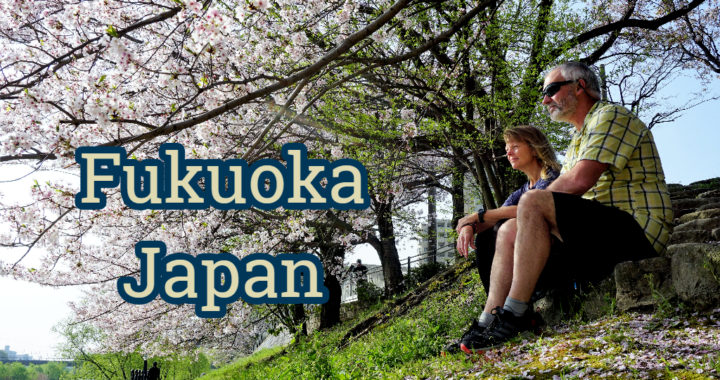
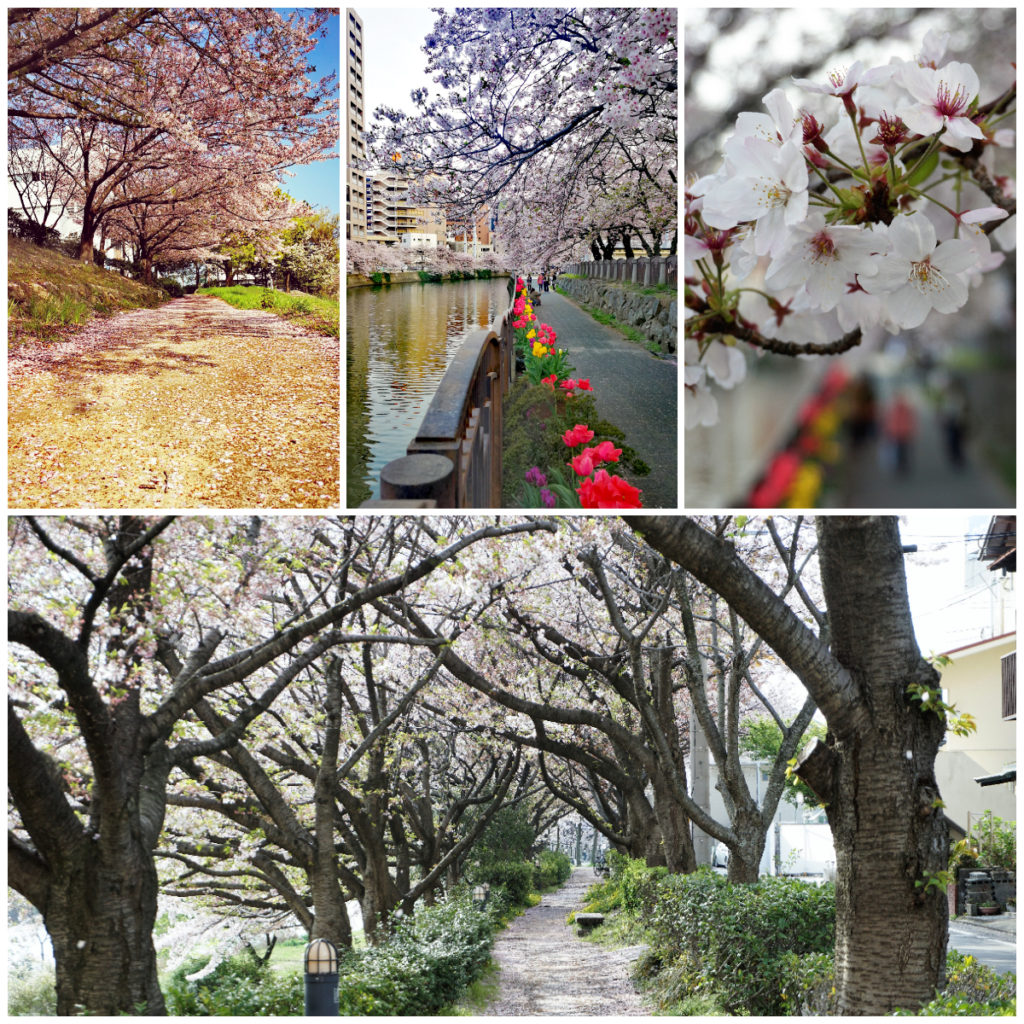
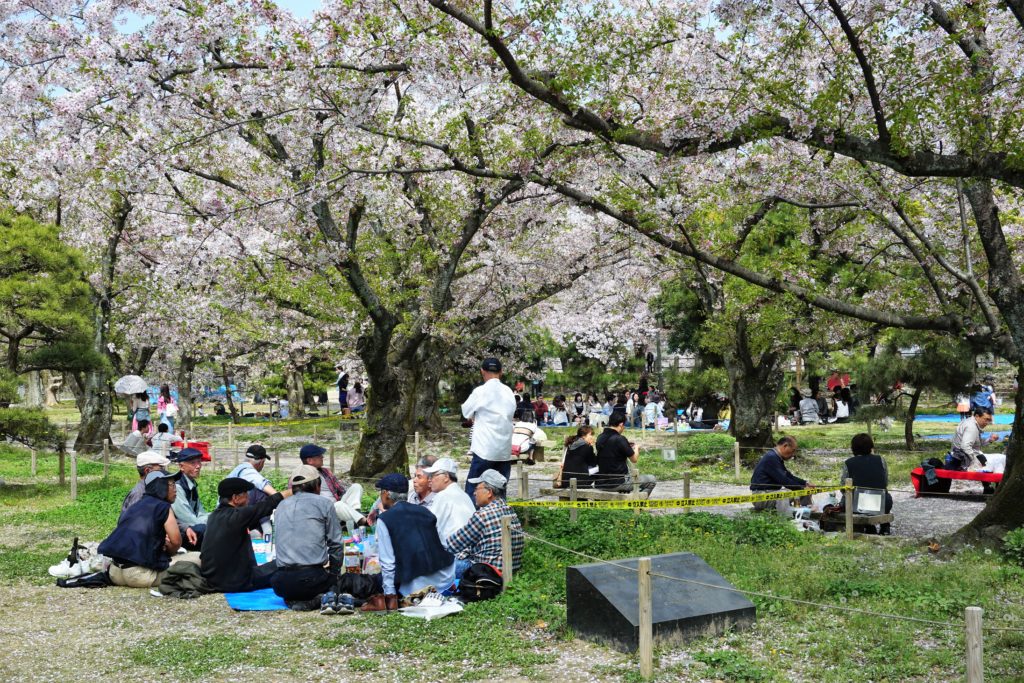
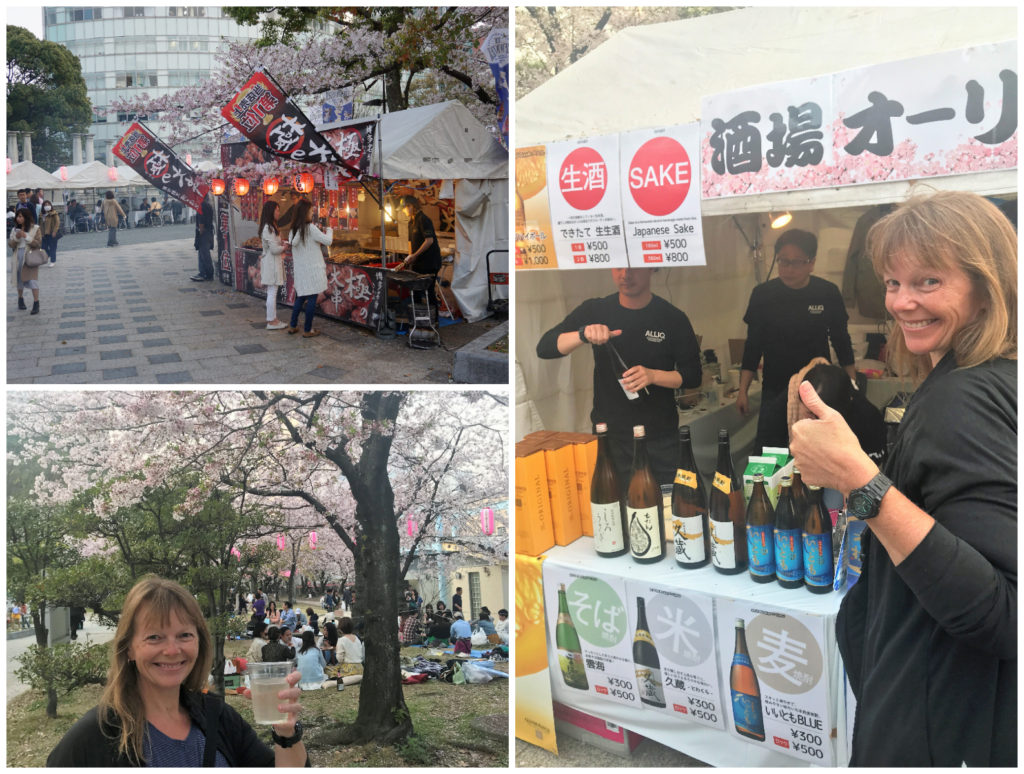
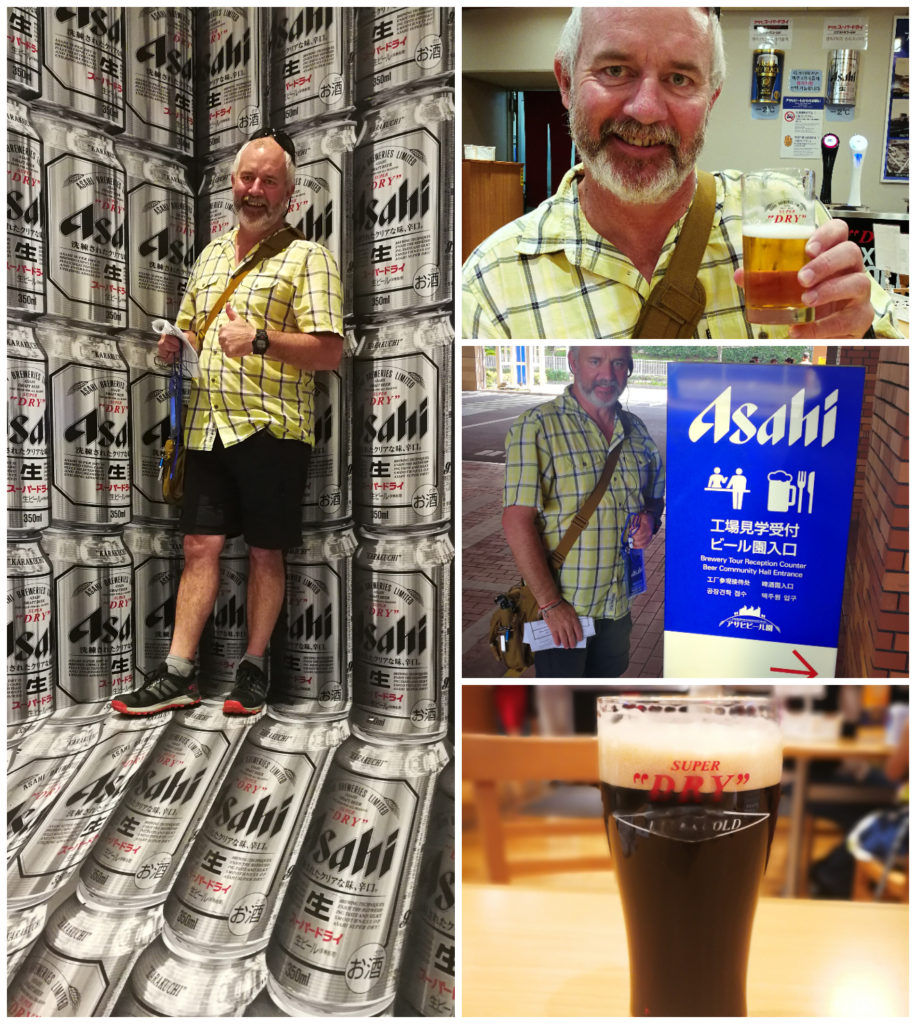
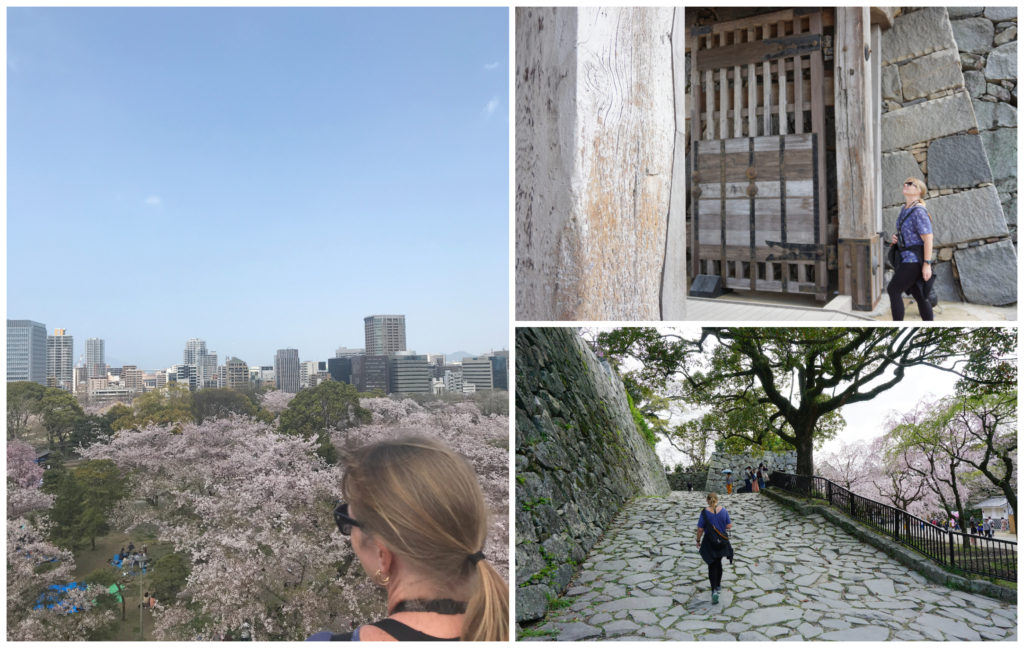
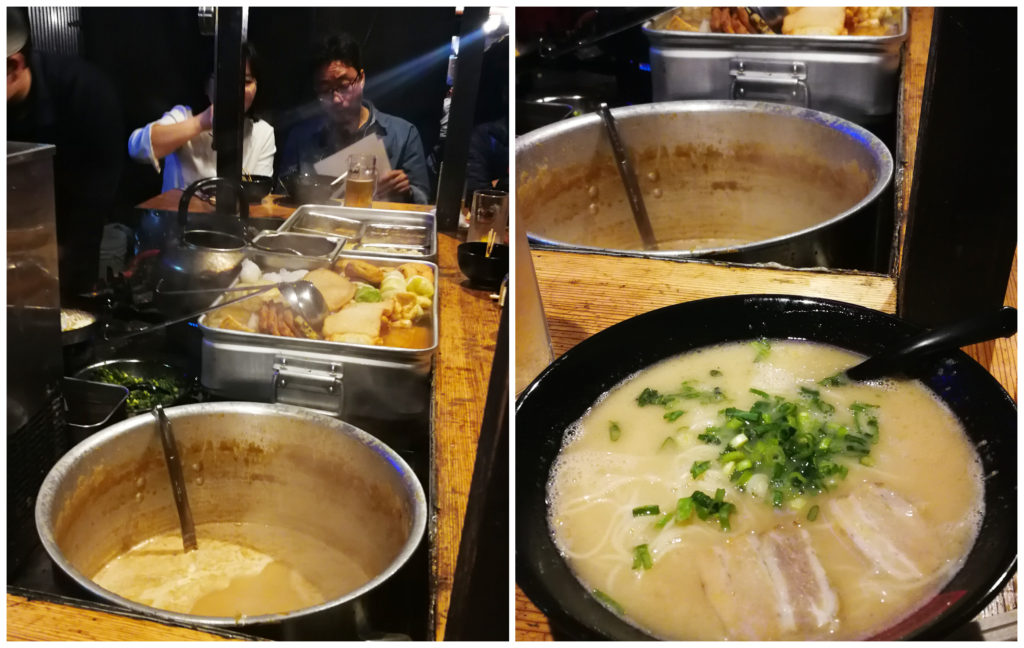
Ive heard so much about the Japanese cherry trees, they look spectacular. A great post with fabulous photos 😊
Thanks Samantha, after hearing so much about the blossoms in Japan, it was special to see them in person.